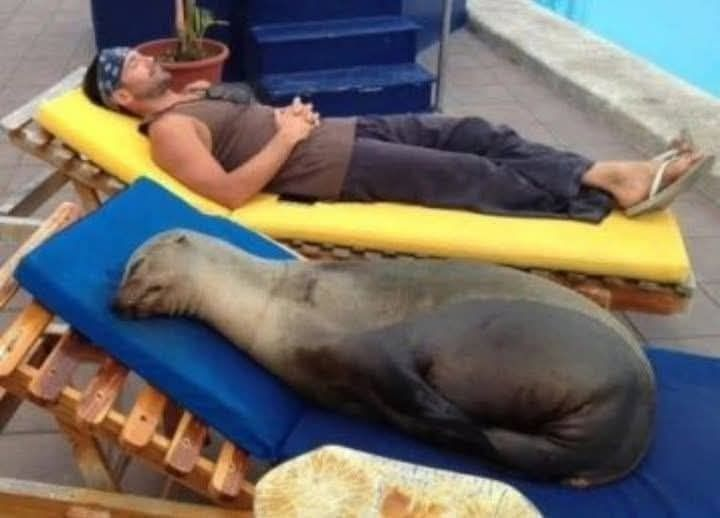In the heart of the Pacific Ocean, the Galapagos Islands stand as a living laboratory of evolution, a volcanic archipelago teeming with creatures found nowhere else on Earth. Here, marine iguanas bask on black volcanic rocks, giant tortoises roam the highlands, and playful sea lions grace the pristine shores. But even in this remote paradise, the encroaching dangers of the human world can cast a dark shadow. This is the story of Panchita, a Galapagos sea lion whose will to survive in the face of such a threat led to an astonishing tale of rescue, recovery, and a unique bond with humanity.
Life for a Galapagos sea lion is a rhythm of sun-drenched naps on sandy beaches and agile hunts in the rich, cool waters. They are the clowns of the archipelago, known for their curious and social nature. But the ocean that sustains them also holds hidden perils. Discarded fishing nets and lines, often referred to as “ghost gear,” drift silently beneath the waves, indiscriminate traps for any creature unfortunate enough to cross their path. For young, inquisitive sea lions, these nets are particularly dangerous. As they grow, the entangling material tightens, cutting through skin, blubber, and muscle, leading to a slow and painful death.
It was in such a sinister embrace that Panchita found herself. A strong, vibrant sea lion, she became ensnared in a fishing net. The unforgiving mesh wrapped around her body, and with every struggle to break free, the lacerations deepened. The once-sleek coat was marred by painful wounds, and hope for survival began to fade with her diminishing strength. How long she suffered in the open ocean remains unknown, a solitary battle against an unyielding foe.

But Panchita’s story was not destined to end in the lonely depths. In an act of desperation or perhaps extraordinary intuition, she did something remarkable. She broke free from the bulk of the net and, instead of retreating to a secluded cove to succumb to her injuries, she swam towards the shore of Isabela Island. Her destination, however, was not a typical sea lion colony. Guided by an instinct we may never fully comprehend, she hauled her bleeding body out of the water and onto the grounds of a nearby hotel.
The sight of the grievously injured sea lion was a shock to the hotel staff and guests. Deep gashes were visible all over her body, a testament to her prolonged struggle. Instead of shying away or calling for her to be removed, they were moved by her plight. A collective sense of compassion took hold. Recognizing that Panchita had, in her own way, asked for help, the people at the hotel decided to act.
For three long months, this unlikely sanctuary became Panchita’s rehabilitation center. The staff, with guidance on how to care for her, tended to her wounds, provided her with food, and, most importantly, gave her a safe space to heal. Slowly, miraculously, Panchita began to recover. The deep cuts started to close, her strength returned, and the light came back into her eyes. She became a beloved, if temporary, resident of the hotel.
As she regained her health, Panchita’s story began to spread, turning her into a local celebrity. Her tale was a poignant example of the threats facing the unique wildlife of the Galapagos. Conservation organizations have long highlighted the dangers of marine debris, with entanglements being a significant cause of injury and mortality for seals and sea lions worldwide. Panchita was a living, breathing embodiment of this pressing issue.
When the day finally came for her to return to the sea, it was a moment of both triumph and uncertainty. Would she thrive? Would she remember the kindness she was shown? The answer came not in days, but in a heartwarming routine that solidified her legend.
Panchita did more than just survive; she flourished. She returned to the wild, a free and healthy sea lion once more. But she never forgot her saviors. Every day, after her excursions out at sea to hunt and play, Panchita would return to the hotel to rest and nap among the people who had nursed her back to health. She would even occasionally take a dip in the hotel pool, much to the delight of onlookers.
In a fitting and beautiful epilogue to her story of survival, Panchita later became a mother, giving birth to healthy pups. The sea lion who had once been at the brink of death was now bringing new life into the world, a testament to her resilience and the compassion that gave her a second chance. Her story serves as a powerful reminder of the delicate balance in our ecosystems and the profound impact that a simple act of kindness can have.